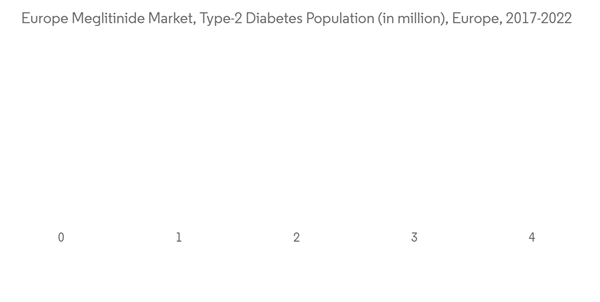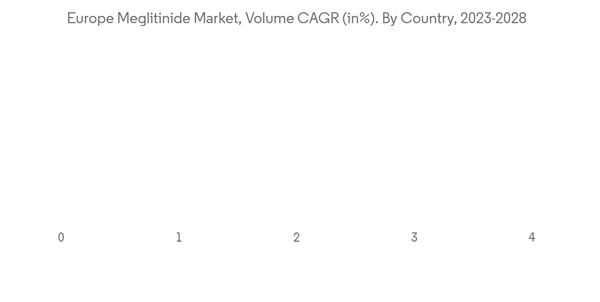The COVID-19 epidemic has significantly affected the market for insulin drugs and devices. Patients with type-1 diabetes are more affected by COVID-19. Since people with diabetes already have weakened immune systems, COVID-19 causes those immune systems to deteriorate rapidly. Those with diabetes are more likely to experience significant complications than healthy persons. During COVID-19, the manufacturers of insulin drugs worked with local governments to provide insulin drugs to diabetes patients.
Meglitinides are a type of non-sulfonylurea insulin secretagogues with a fast onset and short duration of action. They stimulate glucose-sensitive first-phase insulin release, lowering the risk of hypoglycemia. Meglitinides cause the body to release more insulin in people with type 2 diabetes, who have chronically high blood sugar levels.
The World Health Assembly agreed on a Resolution to strengthen diabetes prevention and control in May 2021. It recommends actions such as increasing access to diabetes medicines and health products and assessing the feasibility and potential value of establishing a web-based tool to share information relevant to market transparency for diabetes medicines and health products. The rapidly increasing incidence and prevalence of diabetic patients and healthcare expenditure in Europe are indications of the increasing usage of diabetic drug products. Therefore, owing to the aforementioned factors the studied market is anticipated to witness growth over the analysis period.
This is driving the demand for Meglitinides in Europe, thereby driving the market in focus during the forecast period.
Europe Meglitinide Market Trends
Rising Diabetes Prevalence in Europe Region
The European countries are suffering from the burden of high diabetes expenditure. According to the IDF, the overall diabetes expenditure in Europe among the population aged 20-79 years was USD 156 billion, and it is expected to increase to USD 174 billion by 2040. According to other statistics from IDF, every year, 21,600 children are added to the type-1 diabetic population pool. These figures indicate that approximately 9% of the total healthcare expenditure is spent on diabetes in Europe. Due to the increased prevalence of diabetes, European nations are bearing a heavy financial burden.Type 2 diabetes is increasingly prevalent and associated with an increased cardiovascular and renal disease risk. Along with lifestyle changes, Meglitinides are oral medications for Type 2 diabetes. They work by lowering blood glucose levels by stimulating insulin release from the Beta cells of the pancreas. Their action is dependent upon the presence of functioning Beta cells; therefore, meglitinides do not work in people with type 1 diabetes. Technological advancements and innovations have increased, leading to several modifications in the drugs or the formulations being developed. Numerous health issues are related to diabetes. Diabetes patients must make several daily adjustments to keep their blood glucose levels within normal ranges. For example, they may need to administer more insulin or consume more carbs.
As a result of the variables above, it is projected that the market under study will expand throughout the investigation.
Germany is Expected to Dominate the Europe Meglitinides Market.
One of the astonishing issues facing Germany's healthcare institutions is diabetes, a serious health issue. The adult population of Germany has a relatively high prevalence of type 1 and type 2 diabetes and a sizable number of individuals who have not yet received a diagnosis. Over the next years, it is anticipated that the incidence of type 2 diabetes will rise steadily due to an aging population and an unhealthy lifestyle. The most important elements in preventing complications in German type 2 diabetes patients are high-quality treatment, which includes proper monitoring, control of risk factors, and active self-management. The German Diabetes Centre (DDZ) estimates that at least 7.2% of the population in Germany presently has diabetes, and that number will rise dramatically over the next 20 years. According to German legislation, public insurance plans must restrict out-of-pocket medical expenses and cover all medically essential procedures, including insulin.Meglitinides, for example, bind to the sulfonylurea receptor in beta cells (pancreatic insulin-producing cells) but at a different part of the receptor than sulfonylureas do. Meglitinides' interaction with the receptor is not as "tight" as sulfonylureas', resulting in a much shorter duration of action and a higher blood glucose level required before the drugs produce insulin secretion from the pancreas. Two meglitinides are currently available: repaglinide (Prandin) and nateglinide (Starlix). Both are approved for use in people with Type 2 diabetes alone and combination with other oral diabetes medications. Meglitinides' main effect is to lower after-meal blood glucose levels, which results in a lower HbA1c (an indicator of blood glucose control over the previous 2-3 months).
The market is expected to grow during the forecast period due to the factors above.
Europe Meglitinide Industry Overview
The Meglitinides market is fragmented, with manufacturers like Novo Nordisk, Glenmark, and Novartis having a global market presence and the market is highly competitive due to generic drugs manufacturers' presence.Additional Benefits:
- The market estimate (ME) sheet in Excel format
- 3 months of analyst support
Table of Contents
Companies Mentioned (Partial List)
A selection of companies mentioned in this report includes, but is not limited to:
- Novo Nordisk
- Novartis
- Glenmark
- Boehringer Ingelheim
- Biocon
- Kissei Pharmaceuticals










